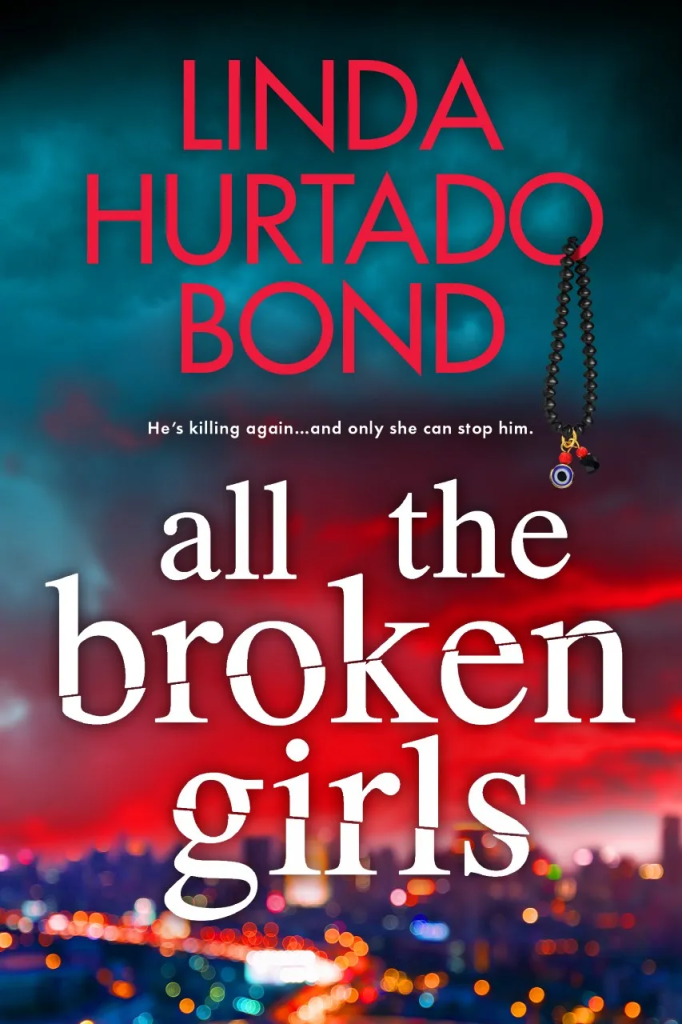Steeped in blood and Santería, “All the Broken Girls,” the fourth novel of writer Linda Hurtado Bond, presents itself as compelling, rife with mystery and intrigue. However, as the book goes on, readers will find themselves playing a game of poker where every card is dealt face-up.
The story follows Mari Álvarez — a TV reporter, like the protagonists of Hurtado Bond’s previous two books — as she hunts for a serial killer through Tampa, Florida. Mari is a strong character, however the novel hinges too much of itself upon her – making her the only character with any real dimension or development.
This is woefully apparent when, a little over halfway through the book, Mari’s beloved Abuela Bonita suffers a heart attack and eventually passes away. When Mari visited her dying grandmother in her ER room, I got the sense that I was supposed to feel something — but, I didn’t. As Abuela Bonita’s heart monitor lets out one final beep, it feels less like a death scene and more like Hurtado Bond is taking an eraser and rubbing Abuela Bonita’s name off the page.
This is largely because Abuela Bonita never feels directly involved in the story. There’s only one scene in which Mari interacts with her grandmother – outside of that, all we know of her is told to us by Mari or a handful of other characters. It’s like being told stories about a relative that passed long before you were born – you may know a lot about that person, but you don’t feel a real emotional connection to them.
The suspects range from characters who appear in name only, like Sebastián Figeuroa, to something as impalpable as an entire gang, the West Tampa Kings. The problem is that each suspect seems to ebb in and out of culpability. We never zero in on most of these suspects for longer than a few chapters, resulting in each feeling like little more than red herrings.
If many of these suspects were sequestered to the beginning of the story as early guesses, perhaps then the book would find a better antagonistic anchor in Edward Jones, or “Hoodie Hannibal.” Edward is by far the most interesting of all the potential suspects; his presence looms heavy over the whole book as he is the only suspect that seems to pose a tangible threat to the protagonist. This, however, makes his off-page death as horribly anti-climactic as the novel’s twist.
The twist villain had the potential to be good, but there are two things that kill the revelation. The first being all the red herrings, which come back to bite Hurtado Bond once again. By obscuring the killer’s true identity behind a cast of suspects, Hurtado Bond creates an effect that is more smoke and mirrors than sleight of hand. It’s like Hurtado Bond threw a whole deck of cards in the reader’s face to distract him while she slid another card up her sleeve.
But what proves fatal to the twist is how Hurtado Bond preemptively places suspicion upon cold-case detective John Hanks. This serves only to weaken the impact of the ending. If Hanks is not the killer, then he is just another red herring which weakens the ending for reasons already mentioned; if he is the killer — which, indeed, he is — then the coming revelation is made extremely obvious. Why else would a suspect be introduced so late? In fact, Hurtado Bond all but confirms that Hanks is the killer by having him say the nod-and-wink line, “Does it matter, as long as justice is served?” at the end of chapter 34, only a few chapters before the big reveal.
Ultimately, these two things will have the reader walking away from the novel with a bland taste that no amount of blood and Santería can begin to season.

